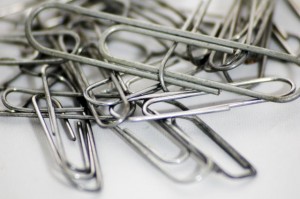 On my never-ending quest for interesting news relevant to metal fabrication machinery and the like, I have stumbled upon news of a woman who has a skin condition unlike any other. Her name is Noorsyaidah, and she lives in Indonesia. According to her own testimony, she has been growing metal wires out of her skin for the last 19 years. Not only this, but they seem to have a mind of their own: when her sister tries to trim them, they shrink back and grow out of some other body part instead.
On my never-ending quest for interesting news relevant to metal fabrication machinery and the like, I have stumbled upon news of a woman who has a skin condition unlike any other. Her name is Noorsyaidah, and she lives in Indonesia. According to her own testimony, she has been growing metal wires out of her skin for the last 19 years. Not only this, but they seem to have a mind of their own: when her sister tries to trim them, they shrink back and grow out of some other body part instead.
According to several terribly written articles containing lots of opinions and more typos than actual facts, she has consulted with 4 different medical professionals who all claim to be stumped for a diagnosis. She also has several x-rays of her insides, which show lots of metal wires inside her stomach area. It should be noted that the x-rays do not appear to be fakes.
What these “scholarly” articles lack in actual information,they more than make up for with disgusting photographs of the woman’s chest and stomach areas, which are riddled with rusty-looking metal wires poking out of them. You can see from the photos that the wires irritate her skin and she does not appear to be having much fun at all. If you absolutely must see these photos, click here.
It seems that in her own country, the general consensus for her condition is that she was cursed and this is all the result of a bad (as in downright lousy) spell that was put on her. Due to the fact that the spell was cast over 20 years ago, it has had plenty of time to work itself into her system and so, according to professional experts on these matters, it will take a long time for any counter-spells to work their own magic.
Although the woman swears that her “condition” is not self-inflicted, it’s hard to not observe the obvious fact that the metal wires only seem to appear in places that she would be able to stick them into all by herself. And although the x-rays showing the wires in her stomach really do appear to be genuine, does that really prove that she is a human metal fabrication factory? The general assumption is that the wires are growing out of her skin, but no one seems particularly interested in proving or even challenging this, especially when an explanation as compelling as witchcraft provides such a ready answer to this mystery.
I did a little research of my own to see if someone would be able to swallow a bunch of metal wires without keeling over and dying along the way. Swallowing a few metal wires is nothing compared to what I found. A 52 year-old woman in Holland by the name of Margaret Daalman went to the hospital complaining of a stomach ache, and the x-ray there revealed the presence of 78 forks and spoons in her stomach. On being questioned about this, she admitted that she had a strong urge to swallow cutlery and that this had been a private hobby of hers for kind of a long time.
If I knew I had 78 forks and spoons inside my stomach, I wouldn’t wait for a hospital doctor to give me a diagnosis on my bellyache. But that’s just me. It definitely redefines the meaning of “please pass me a fork, dear”.
In any case, if the Indonesian woman truly is cursed, then maybe her curse is someone else’s blessing. If she does in fact grow metal wires out of her body, then maybe some forward-thinking entrepeneur in the metal fabrication industry could pay her a salary and then regularly harvest her metal wires. With a little bit of modern technology on her side, she could be a self-regenerating paperclip factory. This might sound a bit callous, but personally, I think it would be a better job for her than taking care of young children, which is what she currently does for a living.
Remember – in the words of Robert South: “Problems can become opportunities when the right people come together.”


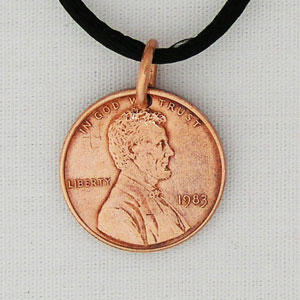
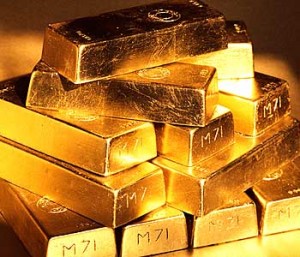
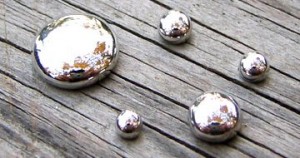

 It must be something in the cyberspace ether, but two weeks after I wrote my last blog article on “Magnetic Boy”, our not-so-little friend from Croatia seems to be creating a new internet sensation. Thanks perhaps to the fact the he’s now a few years older and his body mass has increased as well, to disproportionately high levels in fact, “Magnetic Boy”is now said to be able to get up to 25 kilos of metal to stick to him at any given time. Do a quick Google search and in short order you will find an epic recent photo of him wearing a household iron on his bare chest, which I can only hope wasn’t on at the time. I bet he’s really good at finding the car keys as well.
It must be something in the cyberspace ether, but two weeks after I wrote my last blog article on “Magnetic Boy”, our not-so-little friend from Croatia seems to be creating a new internet sensation. Thanks perhaps to the fact the he’s now a few years older and his body mass has increased as well, to disproportionately high levels in fact, “Magnetic Boy”is now said to be able to get up to 25 kilos of metal to stick to him at any given time. Do a quick Google search and in short order you will find an epic recent photo of him wearing a household iron on his bare chest, which I can only hope wasn’t on at the time. I bet he’s really good at finding the car keys as well.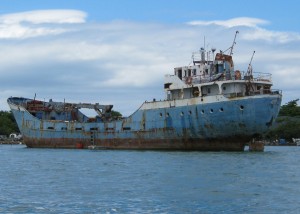 Not a well-known fact but nonetheless a true one: the car industry recycles more materials than any other industry on the planet. This is because metal is an excellent resource to recycle, and extremely cost-effective to do so as well. If it didn’t make sense financially to recycle all the metal in old cars, the auto industry wouldn’t be doing it.
Not a well-known fact but nonetheless a true one: the car industry recycles more materials than any other industry on the planet. This is because metal is an excellent resource to recycle, and extremely cost-effective to do so as well. If it didn’t make sense financially to recycle all the metal in old cars, the auto industry wouldn’t be doing it.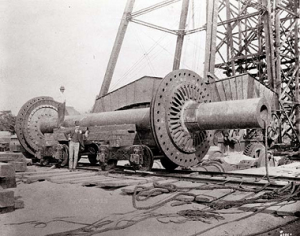 I’ve been curious for some time to find out what the largest metal object in the world is. By “largest metal object in the world”, I mean an object that is formed out of solid metal and is one contiguous piece of homogeneous metal. In other words, search results that yielded things like “largest metal sculpture in the world” don’t count, in my opinion. Additionally, I was looking for something that served an actual purpose, not just something to look at.
I’ve been curious for some time to find out what the largest metal object in the world is. By “largest metal object in the world”, I mean an object that is formed out of solid metal and is one contiguous piece of homogeneous metal. In other words, search results that yielded things like “largest metal sculpture in the world” don’t count, in my opinion. Additionally, I was looking for something that served an actual purpose, not just something to look at.